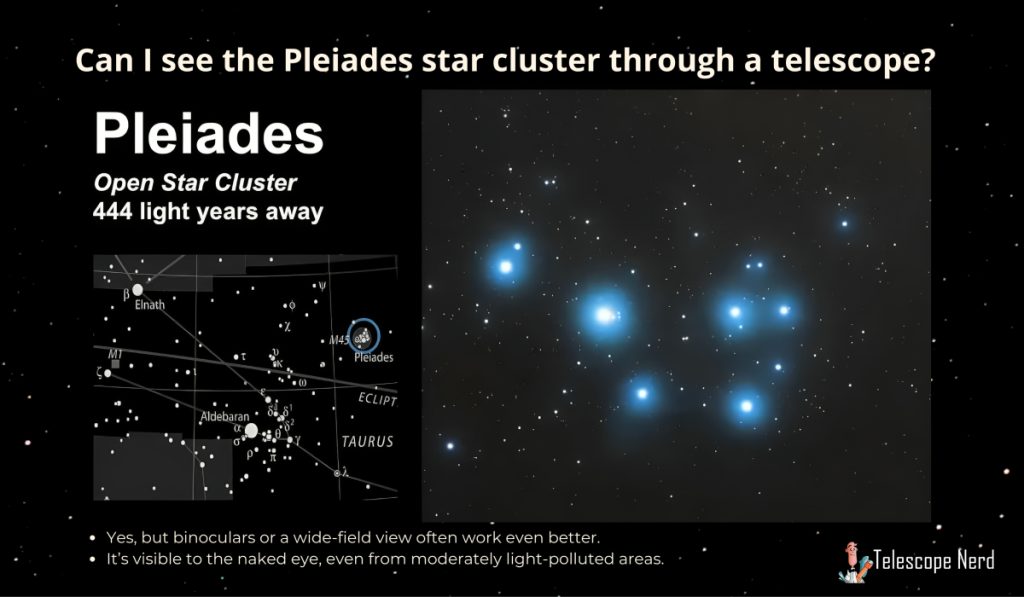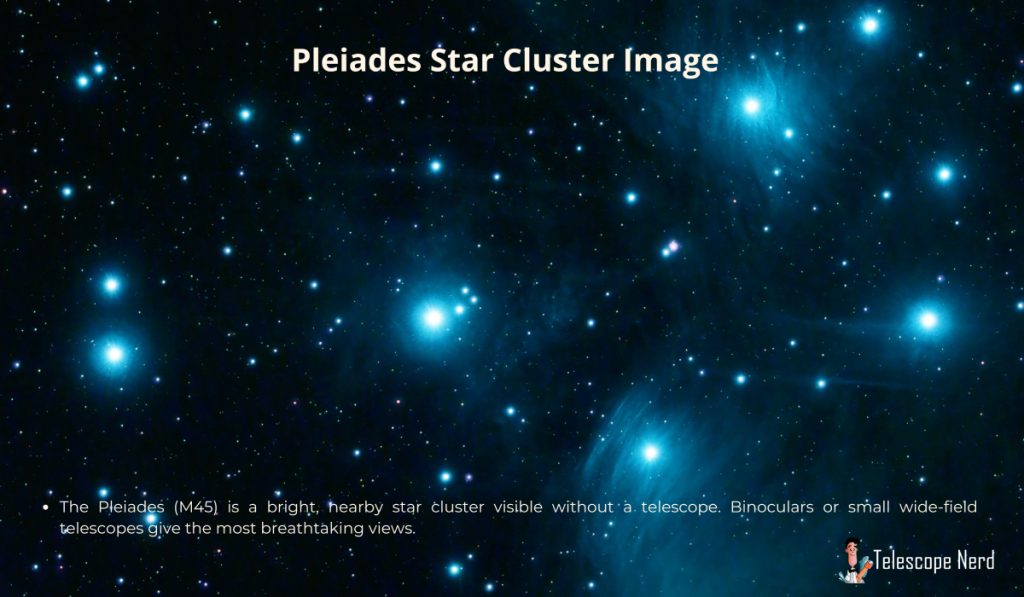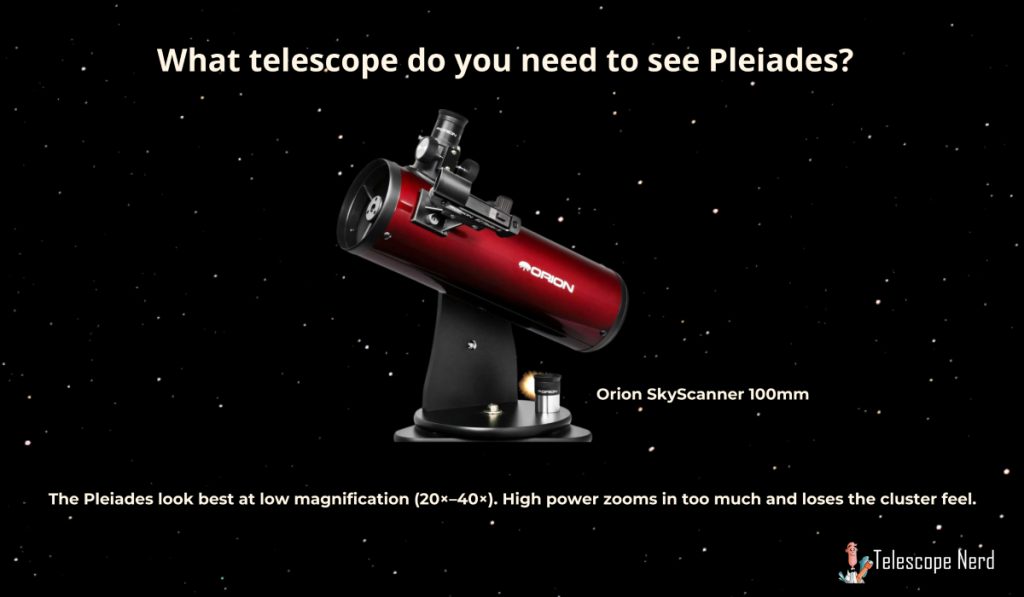Can I see the Pleiades star cluster through a telescope?
The Pleiades is an open cluster of stars that can be observed with the naked eye, yet binoculars or a small telescope reveal it to contain a dense swarm of hundreds of glittering points. A wide-field instrument frames the nine brightest members clearly, and under dark skies the bluish haze around Merope and Maia becomes evident.

Can I see the Pleiades star cluster through a telescope?
Yes, you can see the Pleiades star cluster with a telescope. The Pleiades is an open star cluster in the constellation Taurus, one of the nearest star clusters to Earth, lying about 400 light-years away. It is visible from October to April and is seen all night in November, positioned to the right of the constellation Orion.
The brightest stars are visible to the naked-eye under dark skies, yet a telescope reveals many more stars in the cluster. Using a telescope can reveal nebulosity surrounding the stars, and the nine brightest stars in the Pleiades are shown in a telescope equipped with a wide-angle eyepiece. Higher magnification shows only part of the cluster at any one time, so a wide-field telescope allows for full viewing of the cluster.
The Pleiades star cluster, known as M45 or the Seven Sisters, contains more than 1,000 middle-aged, hot B-type stars and striking blue reflection nebulae. The cluster looks great at any focal length, from wide-angle nightscape to high-magnification deep-sky image.

What telescope do you need to see the Pleiades?
A smaller, wide-field telescope is recommended for viewing the Pleiades. It allows for a broader view of the cluster while still providing enough magnification to see individual stars. The best views are with smaller, wide-field instruments that show the cluster as well as some space around the stars. This makes it easier to see the reflection nebula enclosing the Pleiades.
Binoculars are a great tool for observing the Pleiades. Binoculars or even a small telescope reveal the Pleiades to contain a dense swarm of hundreds of glittering points, even from the suburbs. The nine brightest stars in the Pleiades are shown in binoculars or in a telescope equipped with a wide-angle eyepiece. Under dark skies with larger binoculars, a bluish haze around some of the Pleiades’ stars becomes more evident.
You can see the Pleiades very well via a 70mm (2.76 inch) telescope. Some of the top telescopes for observing Pleiades based on aperture and magnification include the Celestron NexStar 130, Orion SkyQuest XT6 Classic Dobsonian Telescope Kit, and Vaonis Vespera. Celestron AstroMaster 114EQ and Celestron StarSense Explorer LT 80AZ are great telescopes to see the Pleiades.


